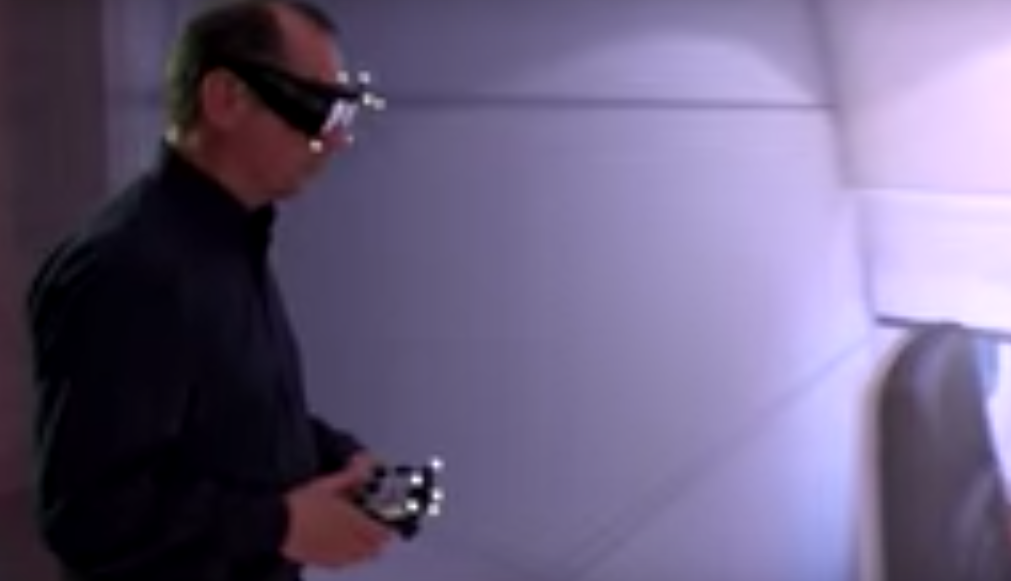Airbus A350 are using Virtual Reality Technology — taken the best ideas from the gaming industry, film, and its own software engineers to transform interior cabin design creation. Creating a unique cabin look is one of the most important features for an airline as it helps it distinguish it from another brand. In the old days coming up with a new look took time and a lot of second guessing. Thanks to this power-wall at the Airbus Innovation Centre in Hamburg – the whole process is revolutionized.
Video shows:
- Airbus Power-wall with engineers watching 3D animation of A350 cabin interior
- Cutaways of team wearing 3D glasses
- Close up of Michael Lau with 3D glasses
- “In the past when I started, I started with a 2D sketching device. We sketched all ideas and we had a lot of catalogues. We had 50 centimeter catalogues in front of you and you have to select from single pages in this catalogue and imagine how this will all work in the end. Nowadays we instantly show what the customer is asking for here in our virtual environment.”
- More General Views inside virtual reality A350 XWB and cutaways of engineers watching and pointing at power-wall
- Virtual reality view of A350 XWB in the air
Michael Lau, Program Manager, Cabin Design, Airbus
“It means the customer is able to see what he will get at the end right at the beginning and this wasn’t before and this is new within the industry. This is unique in our way of working to support the definition and to help customers define their own bespoke cabin.”
- Engineer Dieter with 3D glasses walking virtually inside cabin at Airbus innovation cave
- Cutaway of Dieter looking at video monitors of 3D cabin
- Dieter using remote control steering device to “walk through” cabin
“We have seen 3D before hand and now we are inside. Its called immersive 3D. It means we are part of the scene. My colleague Dieter who is in charge of all this installation and technology here is guiding us and steering us through this while the glasses are tracked. That means his position is recognized by the system and the system will react on him. And he is steering as well with his control to move.”
If you are buying a house you would like to see how it will look like in the end and here you are entering the aircraft and you will see what you get in the end.
- Engineer Stephane wearing 3D glasses and pushing airplane trolley while animated screen tracks his movements in virtual cabin
- Final General Views inside virtual reality A350 XWB cabin
Welcome to the world of virtual reality at Airbus. The plane maker has taken the best ideas from the gaming industry, film, and its own software engineers to transform interior cabin design creation. Creating a unique cabin look is one of the most important features for an airline as it helps it distinguish it from another brand. Thanks to this power wall at the Airbus Innovation centre in Hamburg – the whole process is revolutionized.
Michael Lau, Program Manager, Cabin Design, Airbus
“In the past when I started, I started with a 2D sketching device. We sketched all ideas and we had a lot of catalogues. We had 50 centimeter catalogues in front of you and you have to select from single pages in this catalogue and imagine how this will all work in the end. Its quite complex and this is how it was run in the past. Nowadays we instantly show what the customer is asking for here in our virtual environment.”
It means the customer along with cabin suppliers can decide on the spot what the cabin inside this A350 XWB should look like from the seats to the lighting and carpets. It means the time lag between choosing a virtual new cabin design and its physical installation is far quicker and more cost effective.
Michael Lau, Program Manager, Cabin Design, Airbus
“It means the customer is able to see what he will get at the end right at the beginning and this wasn’t before and this is new within the industry. This is unique in our way of working to support the definition and to help customers define their own bespoke cabin. But Airbus has taken the concept a step further. The 3D glasses gives a far more detailed view inside the plane but what if you could actually go inside your brand new cabin before its built. This is the Airbus Cave – its official name – and engineer Dieter is doing just that. His funky glasses with tracker balls sticking out are linked to cameras that trace his location within the cabin. He is now able to wander around the cabin.”
Michael Lau, Program Manager, Cabin Design, Airbus
“We are now inside 3D. We have seen 3D before hand and now we are inside. Its called immersive 3D. It means we are part of the scene. My colleague Dieter who is in charge of all this installation and technology here is guiding us and steering us through this while the glasses are tracked. That means his position is recognized by the system and the system will react on him. And he is steering as well with his control to move. If you are buying a house you would like to see how it will look like in the end and here you are entering the aircraft and you will see what you get in the end.”
In the meantime you also want to know how practical the cabin outlay you have chosen really is. Take Stephane currently pushing this airline trolley – on the screen he can see whether the crew has enough space to push it through the aisles where seats have been installed. This way unforeseen issues like running over someone’s feet can be resolved before it is too late.
And here is another amazing thought. Remember that 3D walk through the cabin, well down the road tactile sensory features will be added too so you will be able to feel the comfort of the seats that you choose for your new cabin.
Source: Airbus


